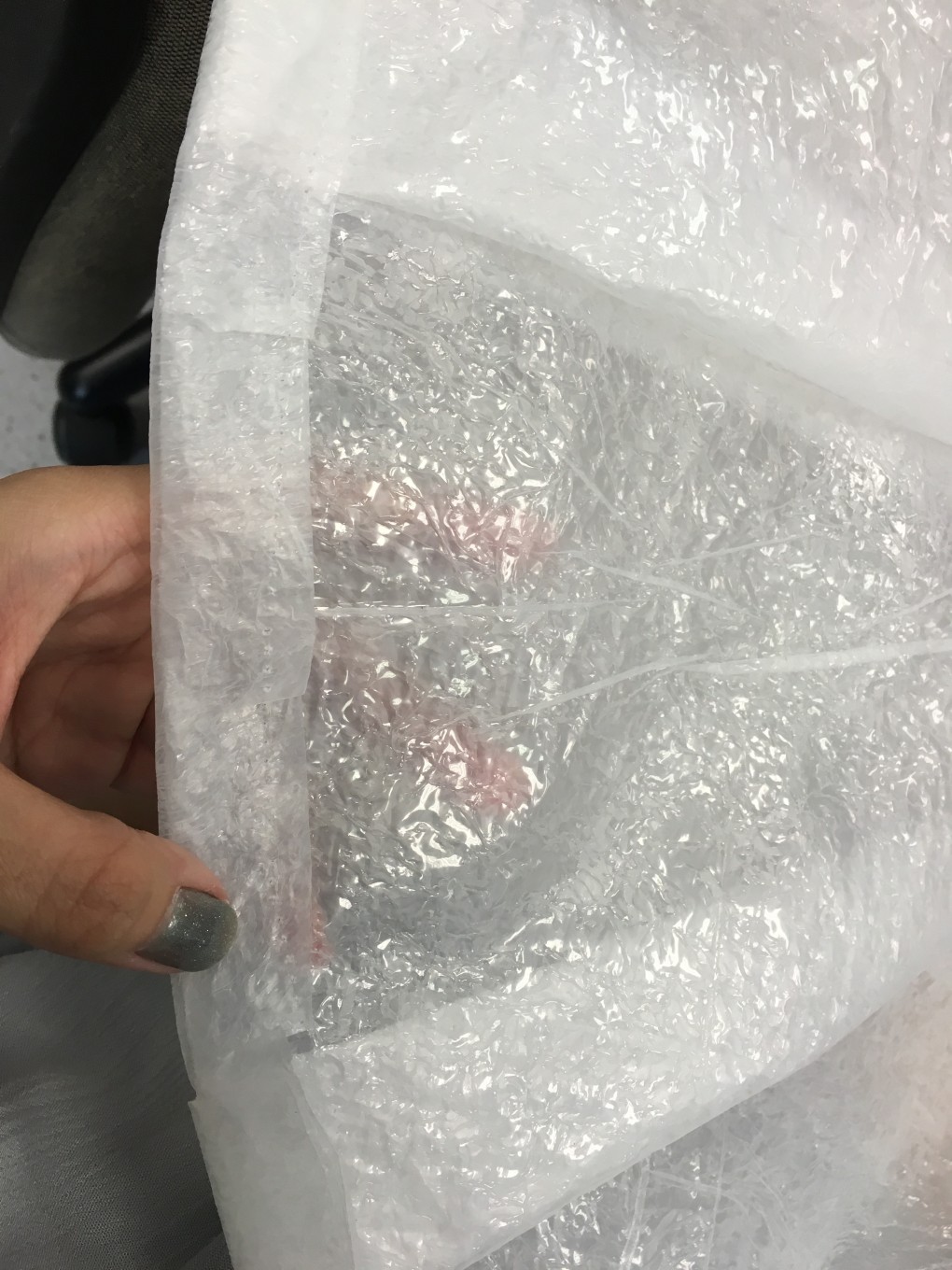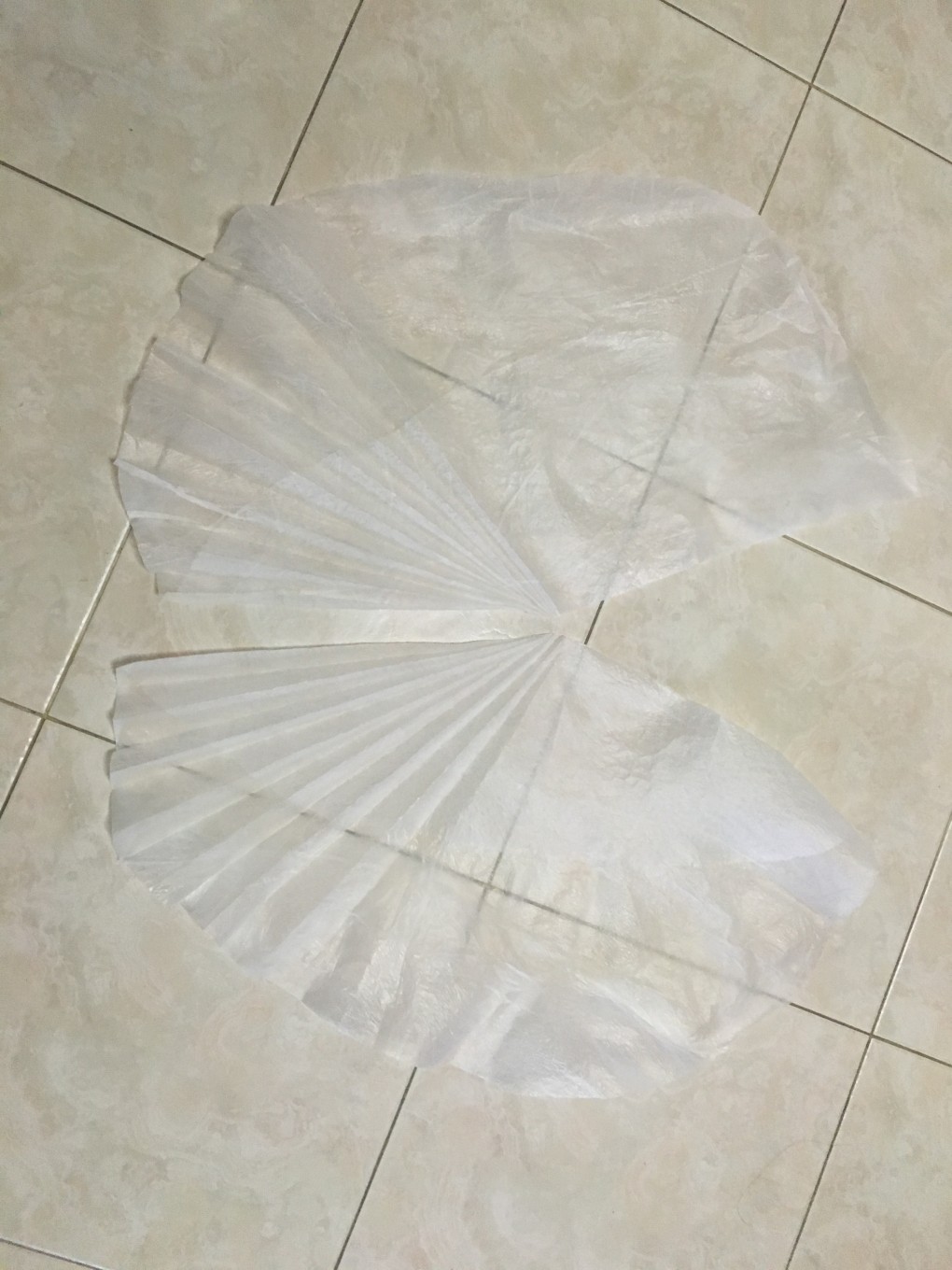
Experimenting with Forms
Which way of making the suit creates a visually interesting form without air contained (first)?
What kinds of form can the inflatable suit take?
Which process of making an inflatable can be the most simple with the greatest visual impact?
Mock-ups – from making mock-ups, one of the most obvious issues of wastage starts to surface: Origami pleated clothes requires at least double of the usual amount of fabric. When the fabric is designed to expand to twice or three times the volume (see below – inspired by the way lanterns fold and expand), the amount of fabric used amounts to at least 3x. Besides this takes up more time and manufacture – a huge concern if this suit has to be made for large scale manufacture as a protective wear.
I developed Mock-up 2 with a circular tracing paper cutout and organza fabric, folded the organza and taped it to the paper cut-out to save on material use. I imagined this piece to look less complicated, with the basic form made with two pieces of fabric minimal seaming and sewing as compared to Mock-up 1. Shoulders are rounded and with boning, thus keeping the shape. It would be better if no boning is needed to keep the shape. However, this form, when seamed on all sides, creates a bubble but it is difficult to inflate width-wise.
Mock-up 3 is made with three modular pieces of leaf-shaped cut-outs, seamed at the sides and folded at the shoulders and collar.
Of the three leaf tips at the collar, one is folded.
• Placed at the back, the folded leaf tip creates a nice cut. But leaves the backbone of the wearer vulnerable to harm.
• The folded side placed at the front, creates a nice pointy collar at the back but is difficult to sit and lean on.
• Prof Galina suggested for the dress to be slanted and avant-garde.
From Mock-Ups 1 – 3, I have concluded that
• To reduce the use of fabric and maintain the shape of the suit both before and after inflation, 2-3 modular pieces of fabric to create form and boning to be used to maintain the shape.
• For the clothes to look less constrictive, the diameter of each cutout should be at least 2 arm’s length wide.
SKETCH FOR ART SCIENCE MUSEUM
NEW UPDATES
Brainstorming other ways of allowing the suit to inflate, but not look too baggy. Also to concentrate the inflated air to the middle of the suit closer to the torso and organs.
Trying method 1: Making the fabric larger and then using darts to constrain the edges so that air flow can be better controlled. This requires boning on the sides to keep it in shape.
constrain the edges so that air flow can be better controlled. This requires boning on the sides to keep it in shape.
Method 2: Making the suit LOOK inflated, by using pleats. So that when the suit inflates, the pleats flatten out. This was done halfway, and I stopped doing this when I realized that the suit is difficult to wear when it is made structurally like a coat with a button at center front. It is hard to control how the suit inflates. By inflating the bottom according to the original sketch,






